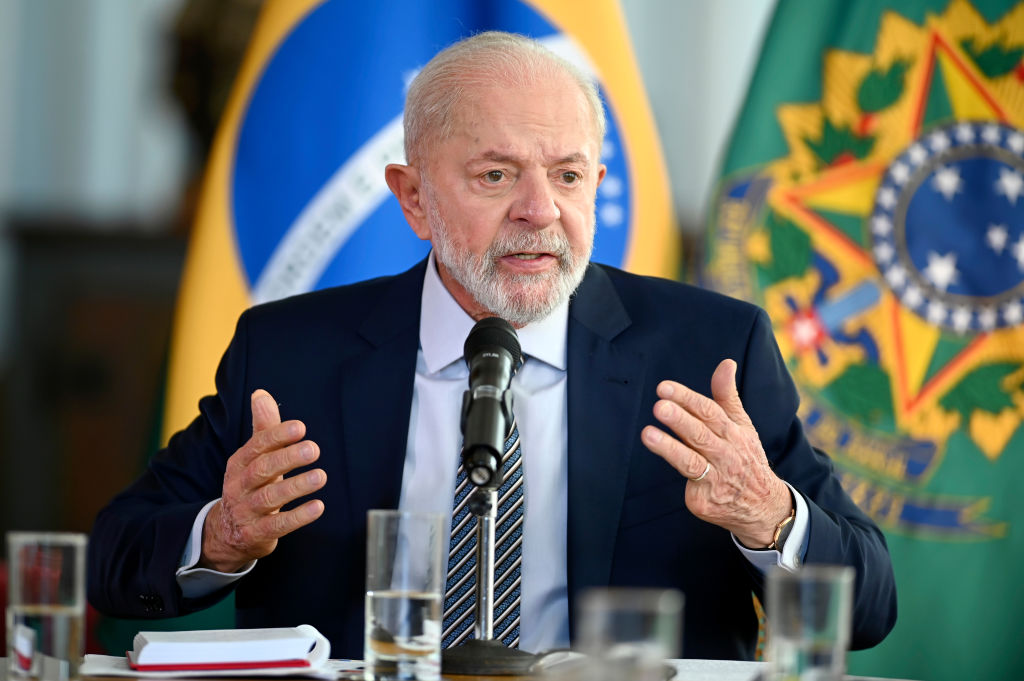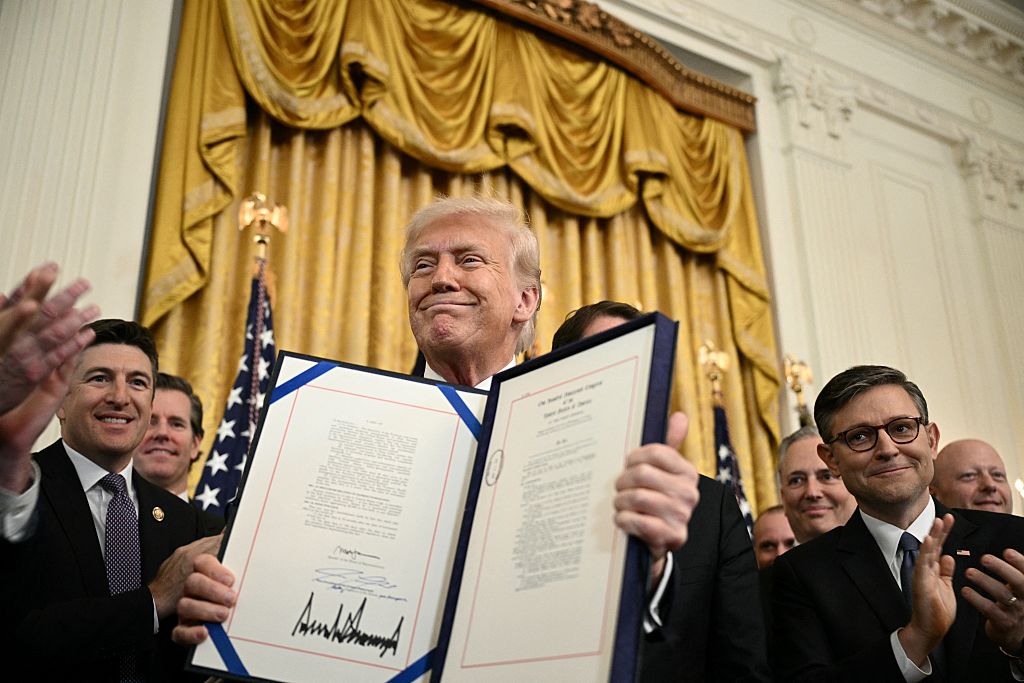Brazil's economic outlook dampens – what it means for investors
While Brazil's markets enjoyed a high last year, they now walk on the "financial wild side" as investors grow wary of president Lula's spending plans

Brazilian stocks rode a “wave of optimism” to a record high last year, says Marcelo Azevedo in Folha de S. Paulo. Markets were relieved that the newly installed left-wing administration of Luiz Inácio Lula da Silva had promised to keep spending under control. This year has been trickier. In January it was apparent that US interest rates would stay higher for longer. That has squeezed emerging markets such as Brazil, which struggle to attract the attention of US-based investors when dollar bonds are already paying well. In April, Brazil’s government compounded the problem by relaxing fiscal targets, further spooking investors.
Are investors losing confidence in Brazil?
The local bovespa stock index has dropped by 5% this year, while the real has been among the worst-performing emerging market currencies this year. A bigger welfare budget has seen state spending rise by 6% above inflation since Lula took office, Rafaela Vitoria of Banco Inter tells the Financial Times. Brasilia has backpedalled on pledges to achieve a primary budget surplus (meaning that government tax revenue exceeds expenditure, excluding interest costs), say Michael Pooler and Beatriz Langella, also in the Financial Times.
At 76% of GDP, Brazilian public debt is already high for an emerging economy. Brazil is in a more precarious position than its peers, Thierry Larose of Vontobel Asset Management tells Craig Mellow in Barron’s. “Debt service already eats up nearly 30% of Brazil’s state revenue, compared with 15% for Mexico.” Instead of tightening the purse strings, Lula’s first instinct has been to blame the central bank for supposedly keeping interest rates too high.
MoneyWeek
Subscribe to MoneyWeek today and get your first six magazine issues absolutely FREE

Sign up to Money Morning
Don't miss the latest investment and personal finances news, market analysis, plus money-saving tips with our free twice-daily newsletter
Don't miss the latest investment and personal finances news, market analysis, plus money-saving tips with our free twice-daily newsletter
“Global investors have soured on the Brazil story”, but on an average of just 7.5 times earnings – a roughly 25% discount to the historical average – the market does contain some “deep value plays”. And, as Larose notes, “Lula has a track record of shifting pragmatically before things get out of control”.
The president may have just pulled off one such pivot, says The Economist. Between 1 January and mid-June, the real had plummeted by 17%, but Lula has since thrown his weight behind finance minister Fernando Haddad, who wants to keep spending tight. That has calmed markets, helping to spark a mini-rally in Brazilian assets in recent weeks.
An immediate crisis is not imminent. The “central bank has $360 billion in reserves” and “almost all the public debt is in local currency”. But an economic model built on “high commodity prices” and “subsidies to favoured businesses” will do nothing to cure “stagnant” productivity or improve the “deficient” education system and infrastructure. The population is ageing and pensions already account for “44% of federal spending”. Brazil is “walking on the financial wild side”.
This article was first published in MoneyWeek's magazine. Enjoy exclusive early access to news, opinion and analysis from our team of financial experts with a MoneyWeek subscription.
Get the latest financial news, insights and expert analysis from our award-winning MoneyWeek team, to help you understand what really matters when it comes to your finances.
Alex is an investment writer who has been contributing to MoneyWeek since 2015. He has been the magazine’s markets editor since 2019.
Alex has a passion for demystifying the often arcane world of finance for a general readership. While financial media tends to focus compulsively on the latest trend, the best opportunities can lie forgotten elsewhere.
He is especially interested in European equities – where his fluent French helps him to cover the continent’s largest bourse – and emerging markets, where his experience living in Beijing, and conversational Chinese, prove useful.
Hailing from Leeds, he studied Philosophy, Politics and Economics at the University of Oxford. He also holds a Master of Public Health from the University of Manchester.
-
 Boost for over 100,000 families on Child Benefit as new HMRC payment system rolled out
Boost for over 100,000 families on Child Benefit as new HMRC payment system rolled outThousands of households will no longer have to pay the dreaded High Income Child Benefit Charge through self-assessment
-
 Are you being haunted by the ghost of Christmas past? How festive cutbacks could boost your long-term wealth
Are you being haunted by the ghost of Christmas past? How festive cutbacks could boost your long-term wealthThe average family spends around £1,000 over the Christmas season. Here’s how much you could have gained if you had invested some of the money instead.
-
 Stock markets have a mountain to climb: opt for resilience, growth and value
Stock markets have a mountain to climb: opt for resilience, growth and valueOpinion Julian Wheeler, partner and US equity specialist, Shard Capital, highlights three US stocks where he would put his money
-
 The steady rise of stablecoins
The steady rise of stablecoinsInnovations in cryptocurrency have created stablecoins, a new form of money. Trump is an enthusiastic supporter, but its benefits are not yet clear
-
 SRT Marine Systems: A leader in marine technology
SRT Marine Systems: A leader in marine technologySRT Marine Systems is thriving and has a bulging order book, says Dr Michael Tubbs
-
 Goodwin: A superlative British manufacturer to buy now
Goodwin: A superlative British manufacturer to buy nowVeteran engineering group Goodwin has created a new profit engine. But following its tremendous run, can investors still afford the shares?
-
 A change in leadership: Is US stock market exceptionalism over?
A change in leadership: Is US stock market exceptionalism over?US stocks trailed the rest of the world in 2025. Is this a sign that a long-overdue shift is underway?
-
 A reckoning is coming for unnecessary investment trusts
A reckoning is coming for unnecessary investment trustsInvestment trusts that don’t use their structural advantages will find it increasingly hard to survive, says Rupert Hargreaves
-
 Modern Monetary Theory and the return of magical thinking
Modern Monetary Theory and the return of magical thinkingThe Modern Monetary Theory is back in fashion again. How worried should we be?
-
 Metals and AI power emerging markets
Metals and AI power emerging marketsThis year’s big emerging market winners have tended to offer exposure to one of 2025’s two winning trends – AI-focused tech and the global metals rally